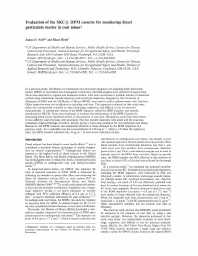Mining Publication: Evaluation of the SKC® DPM Cassette for Monitoring Diesel Particulate Matter in Coal Mines
Original creation date: December 2004
In a previous study, the efficacy of commercial and prototype impactors for sampling diesel particulate matter (DPM) in coal mines was investigated. Laboratory and field samples were collected on quartz-fiber filters and analyzed for organic and elemental carbon. Coal dust contributed a minimal amount of elemental carbon when commercial cascade impactors and prototype impactors, designed by the University of Minnesota (UMN) and the US Bureau of Mines (BOM), were used to collect submicrometer dust fractions. Other impactors were not as effective at excluding coal dust. The impactors evaluated in that study were either not commercially available or were multi-stage, expensive, and difficult to use for personal measurements. A commercial version of the BOM impactor, called the DPM Cassette, was recently introduced by SKC[registered sign]. Tests were conducted to evaluate the performance of the DPM Cassette for measuring diesel-source elemental carbon in the presence of coal dust. Bituminous coals from three mines in two different coal provinces were examined. The dust particle diameters were small and the coal dust contained a high percentage of carbon, thereby giving a worst-case condition for non-anthracite coal mines. Results for the DPM Cassette were essentially identical to those obtained by the BOM impactors in a previous study. At a respirable coal dust concentration of 5.46 mg m(-3), which is 3.8 times the regulatory limit, the DPM Cassette collected only 34 [micro sign]g m(-3) of coal-source elemental carbon.
Authors: JD Noll, ME Birch
Peer Reviewed Journal Article - December 2004
NIOSHTIC2 Number: 20025666
J Environ Monit 2004 Dec 6(12):973-978
See Also
- Control Technologies and Strategies for Reducing Exposure of Underground Miners to Diesel Emissions
- DEEP Project on Evaluation of Diesel Particulate Filters at Inco's Stobie Mine
- Diesel Emissions Control Technologies in Coal Mines
- Diesel Emissions Control Technologies in Metal/Nonmetal Mines
- Effects of Diesel Exhaust Aftertreatment Devices on Concentrations and Size Distribution of Aerosols in Underground Mine Air
- Emissions from a Diesel Engine using Fe-based Fuel Additives and a Sintered Metal Filtration System
- Mutagenicity of Diesel Exhaust Particles from an Engine with Differing Exhaust After Treatments
- Near Real Time Monitoring of Diesel Particulate Matter in Underground Mines
- Technology News 431 - Apparatus for Sampling and Measuring Diesel Tailpipe Emissions
- Toward developing a new occupational exposure metric approach for characterization of diesel aerosols
- Content source: National Institute for Occupational Safety and Health, Mining Program


 ShareCompartir
ShareCompartir
